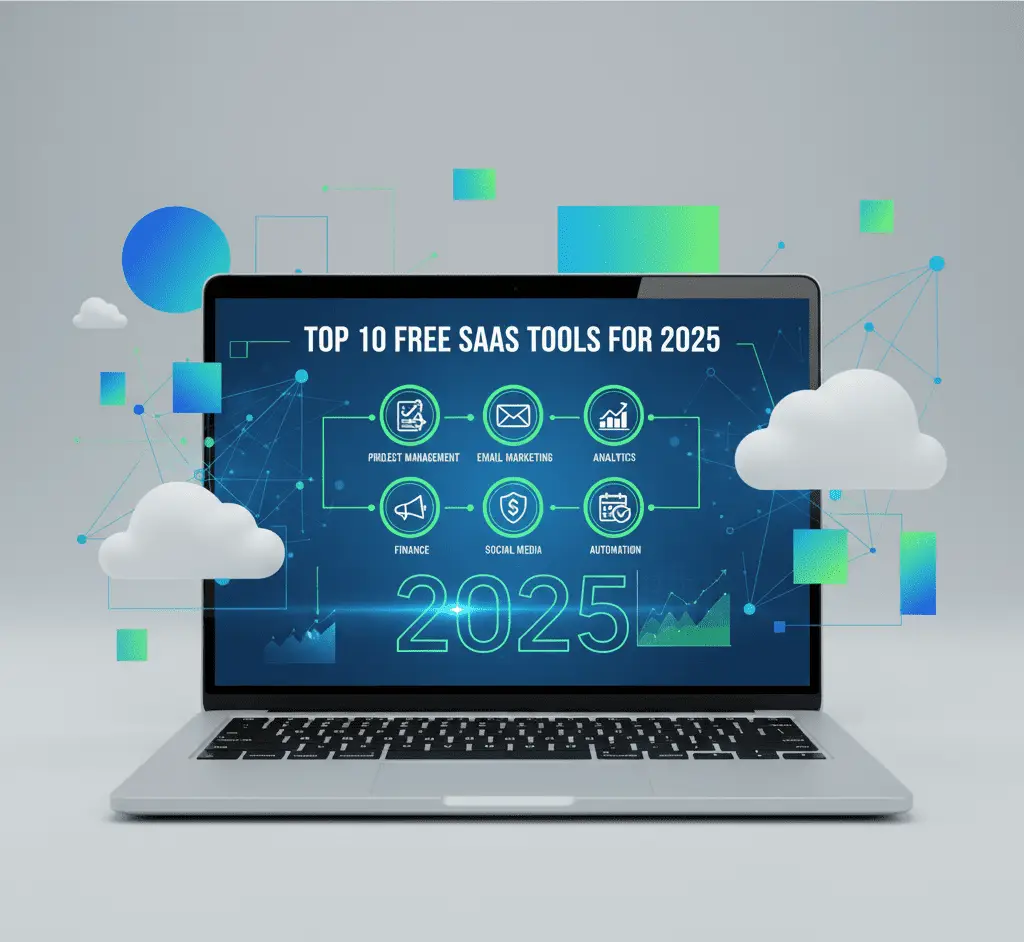When you operate a small business, you take on multiple roles. You balance operations, sales, marketing, finances, customer support — all in a day. The right SaaS tools can make a huge difference as they run online (no complicated installs), scale with you, and have free plans that work perfectly for small teams.
Here are 10 free (or freemium) SaaS tools that small businesses should use in 2025. These are geared toward communication, productivity, marketing, security, and more — the fundamental aspects of business operations.

What Makes a Great Free SaaS Tool?
- The free plan gives useful features, not just a demo.
- It’s easy to use — you don’t need to be a tech wizard.
- It plays well with other tools (integrations).
- It’s reliable and from a company that seems likely to keep supporting the free plan.
Here’s a quick description of each tool, what it does, and how you can employ it.
1. Notion
Use for – Notes, docs, databases, project organization.
Notion is an empty canvas you can use to build anything: your repository for meeting notes, project manager, internal wiki, or content calendar. It also lets you share with your team in real-time.
2. Slack
Use for – Team communication.
Slack replaces cluttered email threads with clean channels. You can have a marketing channel, an operations channel, a support channel — and integrate it with apps like Google Drive, Trello, etc.
3. Google Workspace (Free Tools)
Use for – Documents, spreadsheets, file storage.
Google Docs, Sheets, and Drive enable you and your team to work in real-time. Edit together, comment, share — it’s not surprising why.
4. Wave (Accounting & Invoicing)
Use for – Money tracking, invoices, small business accounting.
Wave is indeed the only accounting software to have a decent free plan specifically designed for small business bookkeeping.
You are able to send out invoices, track expenses, and see your cash flow all in the same area.
5. Trello
Use for – Task & project management.
Trello uses boards, lists, and cards. Think sticky notes on a board — perfect for visualizing tasks. You can move a task from “To Do” to “In Progress” to “Done.”
6. Mailchimp
Use for – Email marketing & newsletters
The free version of Mailchimp lets you send emails, build simple campaigns, and manage your contact list (with limitations). It helps in staying in touch with customers, giving them updates, offers, or information.
7. Canva
Use for – Design and marketing visuals
You don’t need to be a designer to work with Canva. Design social media graphics, flyers, presentations — it’s got templates, drag-and-drop, and free (and paid) assets.
8. Bitwarden
Use for – Password management, secure
Bitwarden stores all your passwords safely, so you don’t have to attempt to recall a million of them. With one master password, you get access to everything else — and your team can share login credentials securely.
9. Clockify
Use for – Time tracking
Clockify helps you realize where your hours are going — by task, by project, or by client. This is handy for freelancers, invoicing, or just optimizing how you spend time.
It has a free version with good features.
10. HubSpot CRM
Use for – Sales tracking, leads, customer relationships
HubSpot CRM’s free edition offers a lightweight but useful system for managing contacts, deals, and interactions. It’s ideal for managing your pipeline without a full CRM solution commitment right off the bat.




